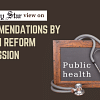Reducing preterm births is an achievable goal. Why are we failing then?

We are alarmed to learn that Bangladesh now has the highest rate of preterm births in the world, with 16 out of every 100 babies being born prematurely. The World Health Organization (WHO), citing a report that analysed data from 2010 to 2020, disclosed on Friday that while the global rate decreased by 14 percent during this period, Bangladesh saw a minimal improvement – a mere 0.2 percent reduction. Its current rate of preterm births not only surpasses the global average but also that of neighbouring countries like India, Pakistan, and even poor African nations with far weaker healthcare systems.
It is worth noting that preterm infants are born before completing 37 weeks of gestation – which is considered a full-term pregnancy. Often, they have low weight at birth, making them more susceptible to various health complications. These challenges have ripple effects on their development and, consequently, society as a whole. Often, neonatal mortality is also associated with preterm birth, which can result from several factors including adolescent pregnancy, maternal infections and malnutrition, stress during pregnancy, etc.
The question that we should be asking is why – despite having multiple projects and initiatives to improve maternal and child health, as a government official made a point of telling Prothom Alo – we are failing so miserably to prevent this scenario. This raises serious questions about the effectiveness of these measures and the sincerity of those responsible. One of the key reasons for preterm birth is adolescent pregnancy caused by early marriage. This one factor has been the enabler of so many problems in Bangladesh, and yet continues to be largely tolerated, both socially and administratively. As a recent Brac survey has shown, a shocking 45 percent of girls are still married off before the age of 18. Any pregnancy thus caused endangers the baby as well as the mother herself.
Thus, it is clear that the government lacks a comprehensive and coordinated approach to tackle these problems and attendant health outcomes. Given the multidimensional backdrop of preterm births, any effort to prevent it should involve not only the health sector but also education, economic development, and societal awareness. In the short term, the objective should be to achieve a rate of preterm births that is closer to the global average, and with the right strategies and commitment, this is an achievable goal. Improving maternal health and promoting the well-being of women during pregnancy must be a priority.


 For all latest news, follow The Daily Star's Google News channel.
For all latest news, follow The Daily Star's Google News channel. 










Comments